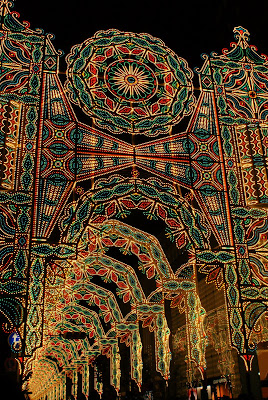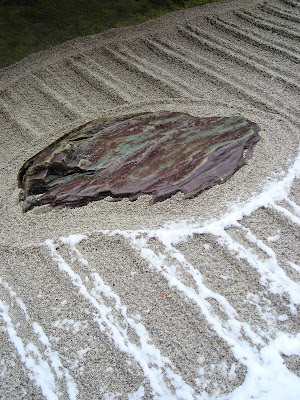20th January 2012
Tuesday marked the 17th anniversary of the Great Hanshin-Awaji Earthquake, better known outside Japan as the Kobe earthquake.
But there's a permanent memorial in a park in the Kobe city centre. The names of the quake victims have been inscribed on little black plaques in an underground chamber. When I was there last December, someone had left offerings of flowers and paper cranes.

I was in Kobe for the annual Luminarie, a light festival held to remind people of the quake that devastated the city. This was the first installation.


Above the rose window-like centre, a half moon.

Then onto and under the shining arches.
There were food and souvenir stalls along the way. This little boy had a bowl of soup gyoza but when he saw his father get some noodles, he wanted them too.

It's a wonder that the parents of young children get to eat at all but I have been told that you can do quite well hoovering up whatever the kid leaves behind.

The highlight of the event: an enclosure composed of giant light panels.


Photography frenzy. And if you wanted everyone in your party to be in the shot, a volunteer photographer was on hand to take the picture.

I found it hard to look away from the lights.

Designs by Italian studio Valerio Festi. The Luminarie is a European tradition dating back to the 16th century and is particularly associated with southern Italy.

More light architecture.

But this time, with a reflecting pool.

Nearby, the obligatory food stalls. This one sold crepes. You could order a crepe with a creme caramel pudding inside.
I'm not sure how I should respond to that.

Grilled tuna on a stick. I don't think you're allowed to order the head though.

Doner kebab world domination proceeding on schedule.

But the event is more than a festival of the flesh. This installation was titled Garden of the Spirits.

Reflection.










